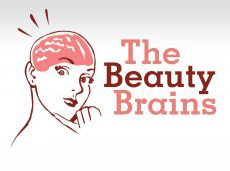This article about a cosmetic science program for kids at the Boston Museum of Science reminded me of all the other odd source of raw materials used in cosmetics. So, here are what the Beauty Brains think are some of the strangest ingredients used in cosmetic and personal care products.
Top 10 Strange Cosmetic Ingredients
10. Placenta – The life giving uterus lining expelled after birth has been used in some beauty care products for years. Various manufacturers claim it helps stimulate tissue growth, reduces wrinkles and is good for your hair. Unfortunately, none of those claims have ever been proven.
9. Whale vomit – This material called Ambergris is useful as a fixative in perfumes. It has a sweet, earthy odor and is usually found washed up on a beach in South America or Australia. It has mostly been replaced by synthetic alternatives.
8. Cochineal beetles – When you need a nice red color, you can drown a few of these buggers in some hot water, dry them out and pulverize them. The deep crimson dye is versatile enough to be used in skin creams, lipsticks and almost any other beauty product.
7. Waste cooking oil – Scientists say that a surfactant can be made from spent cooking oil that will help regenerate damaged skin. So the next time you order a burger don’t be surprised if you hear “Do you want a facial with that?”
6. Human breast milk – It could be a gimmick but some people swear by using human breast milk to make soap. Is this something you would try?
5. Bird poop – Ever heard of a Geisha Facial? It features deep cleansing, $180 price tag, and a big scoop of Nightingale bird poop. Supposedly the uric acid is supposed to be great for your face. Perhaps it is but you certainly don’t need to smear bird droppings on yourself to get it.
4. Bull semen – Want shiny hair? Then a few salons in Europe think they have exactly what you need. Protein from bull semen is supposed to give amazing results. I’m skeptical it will give you anything more than a stiff hair cut.
3. Snake venom – One of the most ridiculous new ingredients for keeping wrinkles at bay is snake venom. Cosmetic makers who use this stuff hope that you’ll connect the Botox poison with snake poison and figure both must work wonders on wrinkles. Despite what Jamie Pressly might think, snake venom hasn’t been shown to have any positive improvement in wrinkle creams.
2. Chicken bone marrow – Supposed to be a good source of glucosamine but how that helps your cosmetic remains a mystery. But people still use chicken bone marrow but they rarely advertise it as such.
1. Cow dung – It turns out you can make an incredibly pleasant smelling vanilla fragrance from extracts of cow dung. It’s not just a fertilizer any more.
We hope you enjoyed that stroll through the cosmetic chemist’s raw material wonder land. Have you heard of any other strange ingredients used in cosmetics? Leave a comment below.
